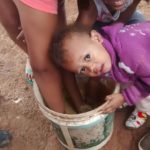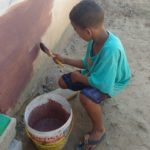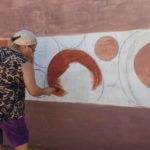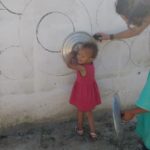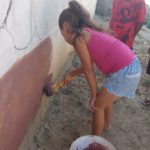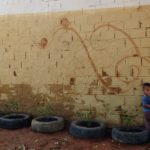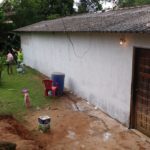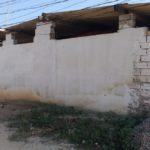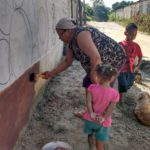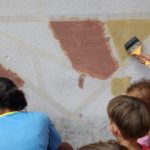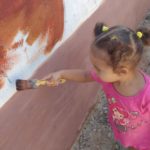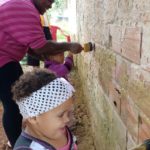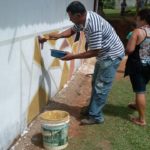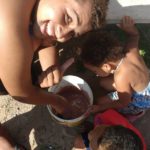
- Home
- Who we are
- Initiatives
- 2023
- 2022
- 2021
- 2020
- 2019
- Acreditar
- Capão’s Citizen Association
- CENEP
- ClareArt Association
- Dreaming Project Institute
- Interference
- Nursery Walk With Love is the Solution
- Organic Outskirts
- Panthers’ Productions Collective
- Sementinha Project (Little Seed) – Year 5
- Stitch to Stitch Collective
- The Story Finders Collective
- Untangle and Don’t Fool Me Collective
- 2018
- 2017
- 2016
- 2015
- 2014
- Partners
- Network and Territory
- Transparency
- Publications
- Make a donation!
Sementinha Project (Little Seed) – Year 2
CPCD
CPCD is a non-governmental organization (NGO) founded in the year of 1984, in the city of Belo Horizonte, state of Minas Gerais, by Tião Rocha, an educator and anthropologist. CPDC was created to act in Popular Quality Education and Sustainable Community Development, using Culture as a raw material and as a pedagogical and institutional working tool.
Its mission is to be a permanent learning institution in the fields of Education and Development, using Culture as raw material and as an action tool.
Since 1984, CPCD strives to implement and accomplish innovative projects, integrated programs and Social Transformation and Sustainable Development platforms, which are intended for communities and cities with less than 50.000 residents where 90% of the Brazilian population lives.
CPCD and Fundação ABH partnered up to initiate the Projeto Sementinha in Chácara Santo Amaro (Grajaú district) in the city of São Paulo, São Paulo State.
When building a Healthy Community seeds are spread in many directions.
In a territory formed by children, young adults, women, families with accumulated knowledge, dreamed dreams and available potential, possibilities are diverse and promising.
One of the possibilities is to mobilize mothers and along with them assist their small children with the participation of the entire community.
From that moment on, the territory worth is recognized, cultural memories are revived, values are reaffirmed, bridges are built and changes occur.
Sementinha Project (also known as “The school under the mango-tree”) is a pre-school educational initiative, intended for kids between the age of 4 and 5, who were not assisted by public or private schools. This project began in Curvelo, Minas Gerais State, in 1984, to assist children in need. After that, the project was developed in Araçuaí/MG, São Francisco, MG, Porto Seguro/BA, Santo André/SP and Pinheiro/MA and, more recently, in Chácara Santo Amaro/SP!
The project goals are as follows:
- To create a new teacher-and-student concept;
- To build an innovative education practice.
To achieve these goals a methodology was developed in order to:
- foster “dialogue” as a moderator in relationships among participants
- prioritize respect for individual differences
- value individual know-how
- seek collective and educational solutions for all issues experienced by the participants
- build an open, plural and democratic education
- transform every occupied environment into a “school” and every “school” into a “community culture center”
In short, Sementinha Project can be defined as:
- School-environment is the neighborhood;
- School-content is the community culture;
- An educator is everyone who participates in the educational process.
Impact in 2016:
Qualitative indicators:
- Interested, participative and happy children
- Children caring about organizing their living space
- Clear enjoyment of children in participating in school activities
- Mothers and residents who offer to do workshops in their homes
- Institutions interested in partnering with Sementinha
- Interest of Vila do Sapo residents in new technologies. The village had its name changed to Vila das Flores,
- Participation of residents in the proposed activities
- New residents getting involved in the actions
- Weekly circles with educators for reflection and modification of environments
- Good responsiveness of some residents who opened their doors
- Identification of new light points
- Partners effectively involved in the project actions
- Neighbors closer to each other
Quantitative indicators:
- 103 children assisted
- 69 children assisted directly at school
- 49 first grade children
- 20 sixth grade children
- 34 children assisted directly in the community
- 25 families assisted directly
- 37 hours of various training
- 66 workshops for children and their families (fabric painting, games and toys, ground paint, Community greengrocers and cleaning supplies, homemade medication, puppets)
- 20 earth paint backyard environments and permaculture practices ( mandalas, embroideries, planting of seedlings, herbal spiral, tire garden)
- 3 storytelling
- 34 different types of playful activities developed daily
- 8 merry-go-round
- 9 types of medicinal herbs found with properties advertised and used during workshops
- 8 new earth colors captured
- 10 puppets produced
- 25 reading mediations
- 6 workshops of learning games
- 1 mini nursery
- 6 games used with neighborhood school teachers
- 2 games played with the first years classes: Affection and Letter Opening
- 4 movie sessions
- 150 earth paint cards
Want to know more about the Sementinha Project? Access the links below:
http://www.cpcd.org.br/projeto-sementinha-comunidade-educativa/
Testimonies
“Sementinha School differs from all other schools. It is the most beautiful thing in the neighborhood. Children talk to us about everything, they don’t learn only the alphabet, they learn about life and their ideas are evolving. Sementinha is not like other schools, where a black person is an outcast, standing in the corner and a white or a rich person is the best. Here, the dirty, the outcast and the black kid are all embraced, we are all equals.” (Maria Geralda Gomes, a 44-year-old mother from Itasa neighborhood, São Francisco, Minas Gerais State.)



